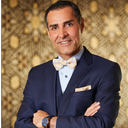Posted underFacelift q&a
How can a surgeon avoid damaging the nerve while shaving the salivary glands during my facelift?
How can a surgeon avoid damaging the nerve while shaving the salivary glands during my facelift? Is he able to see it?
Answers (17)
From board-certified doctors and trusted medical professionals
Dr. Kevin Sadati, DO

Dr. Kevin Sadati, DO
Facial Plastic Surgeon, Board Certified in Otolaryngology – Head and Neck Surgery
Answer
Dr. Ronald J. Edelson, MD

Dr. Ronald J. Edelson, MD
Board Certified Plastic Surgeon
Answer
Dr. Boris M. Ackerman, MD

Dr. Boris M. Ackerman, MD
Board Certified Plastic Surgeon
Answer
Dr. Harold J. Kaplan, MD

Dr. Harold J. Kaplan, MD
Board Certified Facial Plastic Surgeon
Answer
Dr. James M. Ridgway, MD, FACS

Dr. James M. Ridgway, MD, FACS
Board Certified Facial Plastic Surgeon
Answer
Dr. Jed H. Horowitz, MD, FACS

Dr. Jed H. Horowitz, MD, FACS
Board Certified Plastic Surgeon
Answer
Dr. Vincent N. Zubowicz, MD

Dr. Vincent N. Zubowicz, MD
Board Certified Plastic Surgeon
Answer
Dr. Robert M. Lowen, MD

Dr. Robert M. Lowen, MD
Board Certified Plastic Surgeon
Answer
Dr. David Saadat, MD
Dr. David Saadat, MD
Board Certified Facial Plastic Surgeon
Answer
Dr. Barry L. Eppley, MD, DMD
Dr. Barry L. Eppley, MD, DMD
Board Certified Plastic Surgeon
Answer
More Facelift Questions
See all Facelift Q&AWE SEND PRETTY
EMAILS
What’s trending? Who’s turning heads? Which TikTok myths need busting? We’ve got you. No fluff, no gatekeeping—just real talk. Get our free, unfiltered newsletter.